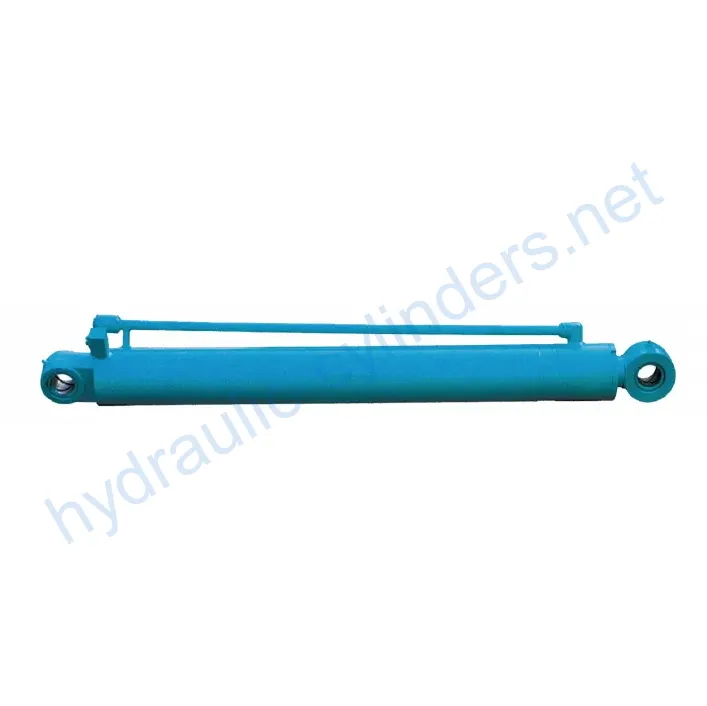Arm CylinderFor Sany Middle Excavator SY210C
Mint a hidraulikus hengerek egyik gyártója, szállítója és exportőre a mechanikai termékek, kínálunk hidraulikus hengerek és sok más termék.
Kérjük, lépjen kapcsolatba velünk a részletekért.
Posta:sales@hydraulic-cylinders.net
Hidraulikus hengerek gyártója, szállítója és exportőre.
Arm Cylinder For Sany Middle Excavator SY210C
Introduction
The Arm Cylinder is a specially designed hydraulic cylinder that provides linear motion and power to the arm of various machinery, such as excavators, cranes, and robotic arms. It plays a crucial role in hydraulic systems, allowing for efficient movement and control of additional tools or attachments. These cylinders not only provide smooth motion but also withstand heavy loads, ensuring efficient operation and reliability of the machinery in various working conditions.

Features
- High Efficiency Transmission: The Arm Cylinder delivers powerful linear motion and force, ensuring high-performance capabilities for the mechanical arm in various operations.
- Precision Control: Through the hydraulic system, the Arm Cylinder enables precise motion control, enhancing the flexibility and accuracy of the attached tools.
- Durability: Arm Cylinders are typically manufactured using high-strength materials, providing excellent wear resistance and corrosion resistance, making them suitable for long-term use in harsh environments.
- Multi-functional Adaptability: These cylinders are widely used in various machinery, including excavators, cranes, and robotic arms, adapting to different work requirements.
- Easy Maintenance: Designed for ease of maintenance and replacement, the Arm Cylinder facilitates convenient periodic inspections and maintenance, reducing equipment downtime.

Applications
Arm Cylinders find applications in various industries and sectors:
- Construction Engineering: In excavators and cranes, Arm Cylinders control the movement of buckets or boom arms for earthworks, material handling, and structural installations.
- Manufacturing Industry: In automated production lines, Arm Cylinders facilitate the motion of robotic arms for assembly, welding, and material handling processes, improving production efficiency and precision.
- Agricultural Machinery: In agricultural equipment such as harvesters and seeders, Arm Cylinders control the movement of operating arms for tasks like seeding, fertilizing, and harvesting.
- Mining: In mining equipment, Arm Cylinders control the arm movement of mining machinery for ore extraction and handling.
- Logistics and Transportation: In forklifts and handling robots, Arm Cylinders control the lifting and movement of forks, enabling material handling and stacking operations.
Design Considerations and Selection Criteria
When considering the design and selection of Arm Cylinders, several factors are crucial:
- Load-Bearing Capacity: The Arm Cylinder must be able to withstand the maximum load it will encounter during operation.
- Sealing: Various seals, such as piston seals and rod seals, made of wear-resistant materials like polyurethane and nitrile rubber, ensure effective sealing performance.
- Durability: The cylinder body and threaded ends undergo meticulous surface treatment to enhance wear resistance.
- Safety: Safety considerations include features such as pressure relief valves and proper installation techniques to prevent accidents.
- Maintainability: Regular lubrication with hydraulic oil and periodic inspections contribute to the long-term performance and maintenance of Arm Cylinders.

Sealing and Lubrication
The Arm Cylinder utilizes various sealing components, such as piston seals and rod seals, made of wear-resistant materials like polyurethane and nitrile rubber. Additionally, the cylinder body and threaded ends undergo fine treatment to improve wear resistance. Regular lubrication with an appropriate amount of hydraulic oil ensures smooth operation and extends the cylinder’s lifespan.
Regular Inspection and Preventive Maintenance
- Inspect the Arm Cylinder for any signs of leakage or damage regularly.
- Clean the cylinder and ensure that all connections are secure.
- Check the seals and replace them if necessary.
- Monitor the hydraulic oil level and quality.
- Perform preventive maintenance according to the manufacturer’s recommendations.
Product Installation Guide
Proper installation of the Arm Cylinder is essential for optimal performance and safety. Follow these guidelines:
- Ensure that the hydraulic system is depressurized before installation.
- Securely attach the Arm Cylinder to the designated mounting points.
- Make sure all hydraulic connections are tight and free from leaks.
- Check the alignment and positioning of the cylinder for smooth operation.
- Refer to the manufacturer’s instructions for additional installation details.

Safety Considerations and Environmental Factors
When working with Arm Cylinders, implementing safety measures is of utmost importance. Safety precautions include:
- Following proper installation procedures to avoid accidents.
- Adhering to safety guidelines and regulations during operation.
- Using appropriate personal protective equipment when handling hydraulic systems.
- Considering environmental factors and ensuring compliance with environmental regulations.
Fault Diagnosis and Common Issues
Arm Cylinders may experience certain faults and common problems, including:
- Leakage from seals or connections.
- Reduced performance or loss of power.
- Irregular or jerky motion of the arm.
- Excessive noise or vibration during operation.
- Inconsistent movement or inability to hold position.
To address these issues, consider the following tips and solutions:
- Inspect and replace any damaged seals or connections.
- Check hydraulic fluid levels and quality, ensuring proper lubrication.
- Clean or replace clogged filters and valves.
- Verify proper alignment and positioning of the cylinder.
- Consult a professional for complex troubleshooting or repairs.

Please note that troubleshooting hydraulic systems can be complex, and professional assistance may be required for certain issues.
About Our Company
We are a leading manufacturer of replacement hydraulic cylinders, offering a wide range of products. With a commitment to excellence, we rely on advanced manufacturing processes and high-quality control systems. By incorporating cutting-edge digital manufacturing equipment and professional testing systems, we continuously optimize our manufacturing platform and improve product quality. Our goal is to meet diverse customer needs with efficiency, precision, and high-quality standards.


Our Strengths
- Professional Expertise: We have a team of experts specializing in hydraulic cylinder manufacturing and SEO copywriting.
- International Certifications: Our products meet international quality standards and certifications.
- Customization Services: We offer tailored solutions to meet specific customer requirements.
Take a Tour of Our VR Factory:
Take a tour of our VR factory with the following
Hydraulic Cylinder Application:


